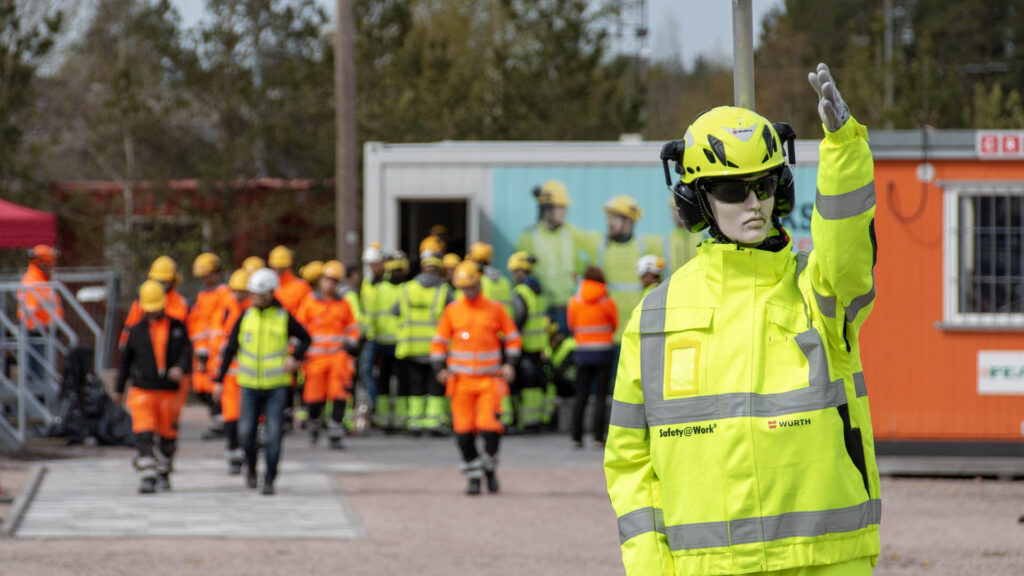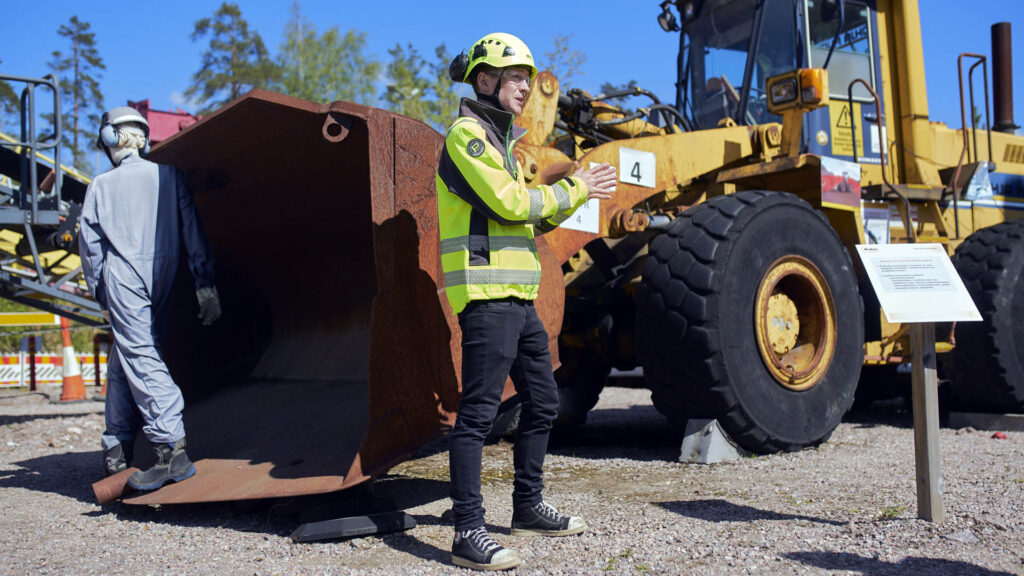Risk-taking and courage may not seem like prerequisites for a safe job at first glance. However, both are needed when it comes to, for example, admitting your own mistakes or intervening in a mistake made by your boss.

The social courage of the individual and the psychological safety of the work community enable both the mental and physical well-being of employees.
“Courage is when an employee wants and dares to act right. It brings good to both the individual and the entire work community. Acting right strengthens professional self-esteem and trust, as well as social cohesion,” Research Professor at the Finnish Institute of Occupational Health Jari Hakanen says.
Courage is equally important in addressing workplace safety issues, bullying, and exclusion from society. Courage is especially needed when you make a mistake yourself.
"Do I dare to admit my mistakes and take the risk of what honesty will mean for me? It is important that we let go of the illusion that we are flawless. Admitting that is good for the entire work community."
A considerable amount of risk-taking is also needed in a situation where the boss is acting incorrectly and the employee raises the issue.
Thanking is more important than rewarding
In a work culture that promotes safety, people dare to report safety deficiencies observed in the workplace, they are corrected in a good spirit, changes are reported within the work community, and those who raise safety risks are taken into account. According to Hakanen, special rewards are not needed in developing occupational safety, but the most important thing is to thank an active person for a good deed.
Fear of losing one's job or being excluded from the work community can reduce the courage and openness of the work community. This is prevented by an atmosphere of trust, which is primarily built by the management and superiors of the work community.
“In a culture of shared responsibility and caring, people are willing to share trust and be open and courageous when they feel that others act this way. Similarly, a person does not care about their work community if they feel that the work community does not care about them.”
An open culture of discussion encourages bold action. When employees are allowed to talk about even difficult issues, it strengthens cohesion.
"The atmosphere is humane when you admit that no one has to be perfect. It is the cement that strengthens the work community at its best, when mistakes are admitted, faced and resolved together. After this, we are stronger than before."

The absorption of work fuels courage, and courage increases the absorption of work.
Well-being at work is a critical part of occupational safety. Overworked or poorly motivated employees do not notice or report occupational safety deficiencies in the same way as well-being employees. An indifferent employee is not socially courageous.
Courage and occupational safety are linked to the term work absorption, coined by Hakanen. It refers to positive commitment to work and the joy it brings. Well-being employees experience work absorption.
According to research, people who experience work burnout are more likely to report occupational safety deficiencies because they want to improve their workplace conditions when the opportunity arises.
“In the midst of work, an employee has the energy to observe the environment, coworkers, and their own work so that they can detect potential occupational safety deficiencies.”
Hakanen has studied the relationship between work engagement, social courage, and social support from colleagues in seven Finnish organizations.
“Job involvement increases social courage and vice versa: a person who acts courageously at work also experiences job involvement. Meaningful work produces positive experiences, the employee is proactive, and he or she bears broader responsibility for the work community than just his or her own task. In the study, courageous people also received support from their work community.”
Not everyone needs to be brave and reveal their flaws. Individual differences come to the fore, who brings the cat to the table and who doesn't. According to Hakanen, research does not support the idea that social support and a good work community automatically have the same activating effect on every employee. In an open and socially safe work community, there is room for everyone.

Everyone can be an example
A psychologically safe atmosphere, where employees feel confident, creates courage. Leadership's example and communication that emphasizes courage are key to creating a psychologically safe atmosphere.
“Management needs to say that addressing grievances in the workplace is encouraged. This approach must also be true in practice.”
According to Hakanen, this is service-oriented leadership, where the manager's job is to help employees achieve their goals as well as possible. One of the goals is to improve occupational safety, ideally zero accidents per year.
"A supervisor must courageously address shortcomings and defend his or her team. A boss must be able to address workplace safety deficiencies and difficult bullying cases in the same way. When he or she fixes problems in a smart way and gets results, he or she sets an example for employees."
Any employee can be a role model in their work community. They are usually valued and such a person receives support. The danger, of course, is that the role of the one who points out the shortcomings accumulates in one person. Then you can encourage your colleagues to get involved in improving occupational safety.
Hakanen has a descriptive postcard in which Tommy Tabermann's poem sums up courage as follows:
“At the threshold of hesitation, ask yourself how much courage you dare not use today.”
Three brave examples from Rudus
Example 1: Safety concerns everyone
Safety concerns everyone, and no one is perfect at it. A illustrative case is the occupational safety manager’s visit to the Rudus factory. He had the right equipment, but he was missing cut-resistant gloves. The factory had decided that everyone had to wear gloves. When the occupational safety manager went to production, an employee immediately grabbed him by the sleeve and asked the occupational safety manager to get the gloves from the office.
Example 2: Acting safely or “not at all”
Rudus contractors have internalized the principles of safe work. For example, concrete truck drivers have refused to work because it has not been safe to enter the construction site or set up the pump. Pourings have been postponed until the issues have been corrected.
Example 3: Courage to stop
The Rudus factory was preparing for renovation work, before which the Rudus foreman and the contractor's employees went through a risk assessment. One of the points in it concerns the risk of falling when working at height.
Rudus's foreman noticed that the roof was missing attachment points for safety harnesses and grabbers. So they didn't go up to the roof and didn't start work. They immediately started solving the problem: how to install attachment points on the felt roof.
The story has been adapted from an article originally published on Rudus' own channels.